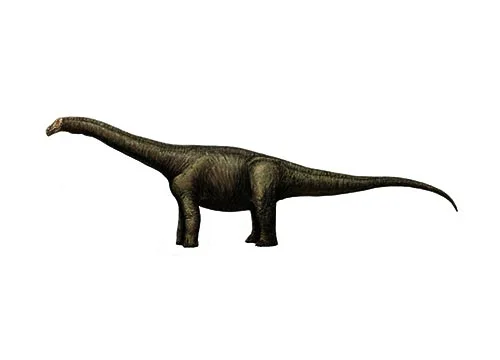Opisthocoelicaudia (Posterior cavity tail)

Oh-pis-tho-see-lih-caw-dee-ah
Borsuk-Białynicka - 1977
Herbivore
Estimated 11-12 meters long
Sauropod
O. skarzynskii (type)
Mongolia - Nemegt Formation
Late Cretaceous, 80-70 million years ago
Opisthocoelicaudia Facts
Opisthocoelicaudia is a genus of sauropod dinosaur that lived during the Late Cretaceous period, about 70-80 million years ago. Its name comes from the fact that the vertebrae in its tail were opisthocoelous, meaning that they were concave on their posterior surface and convex on their anterior surface. This created a unique posterior cavity in the tail, which is reflected in its name.
Opisthocoelicaudia was a member of the sauropod group of dinosaurs, which were known for their large size and long necks. It is estimated to have grown to a length of around 11-12 meters (36-39 feet) and weighed around 6-7 tons. The remains of Opisthocoelicaudia have been found in what is now Mongolia, in the Gobi Desert.
One of the most distinctive features of Opisthocoelicaudia was its long, slender neck. It is believed that the neck of Opisthocoelicaudia may have been able to reach up to 7 meters (23 feet) in length, which would have allowed the dinosaur to browse on vegetation that was out of reach for other animals. The tail of Opisthocoelicaudia was also quite long and flexible, and may have been used for balance or for defense against predators.
Opisthocoelicaudia is known from relatively few fossils, and little is known about its behavior or ecology. However, based on its anatomy, it is believed to have been a herbivore that lived in a forested environment. It is possible that it may have lived in herds or family groups, as is common among other sauropod dinosaurs.
In conclusion, Opisthocoelicaudia was a Late Cretaceous sauropod dinosaur known for its distinctive posterior cavity tail. With its long neck and tail, it is believed to have been a herbivore that lived in a forested environment. Although relatively little is known about Opisthocoelicaudia, the study of this dinosaur provides important insights into the diversity of life that existed on Earth millions of years ago.



